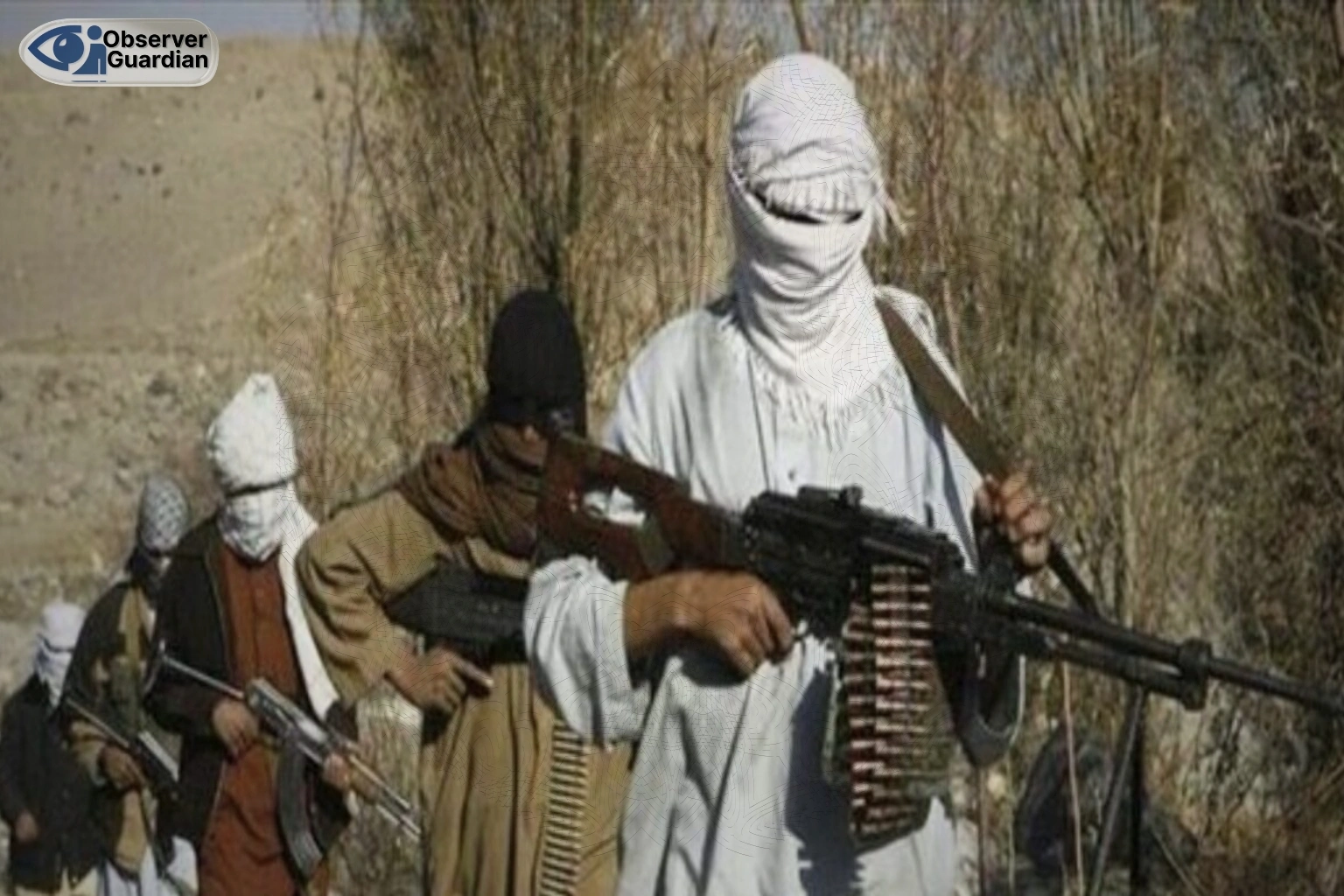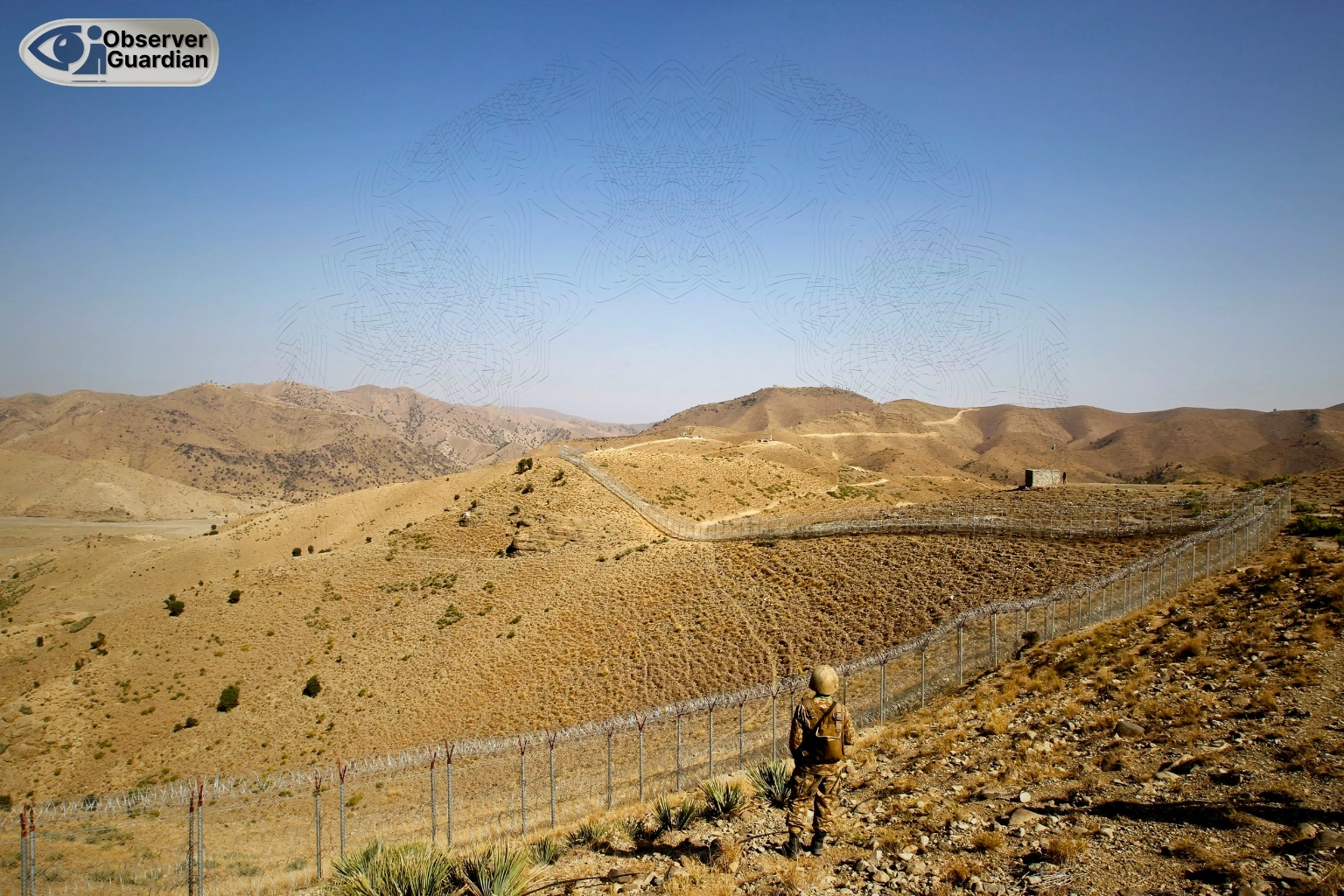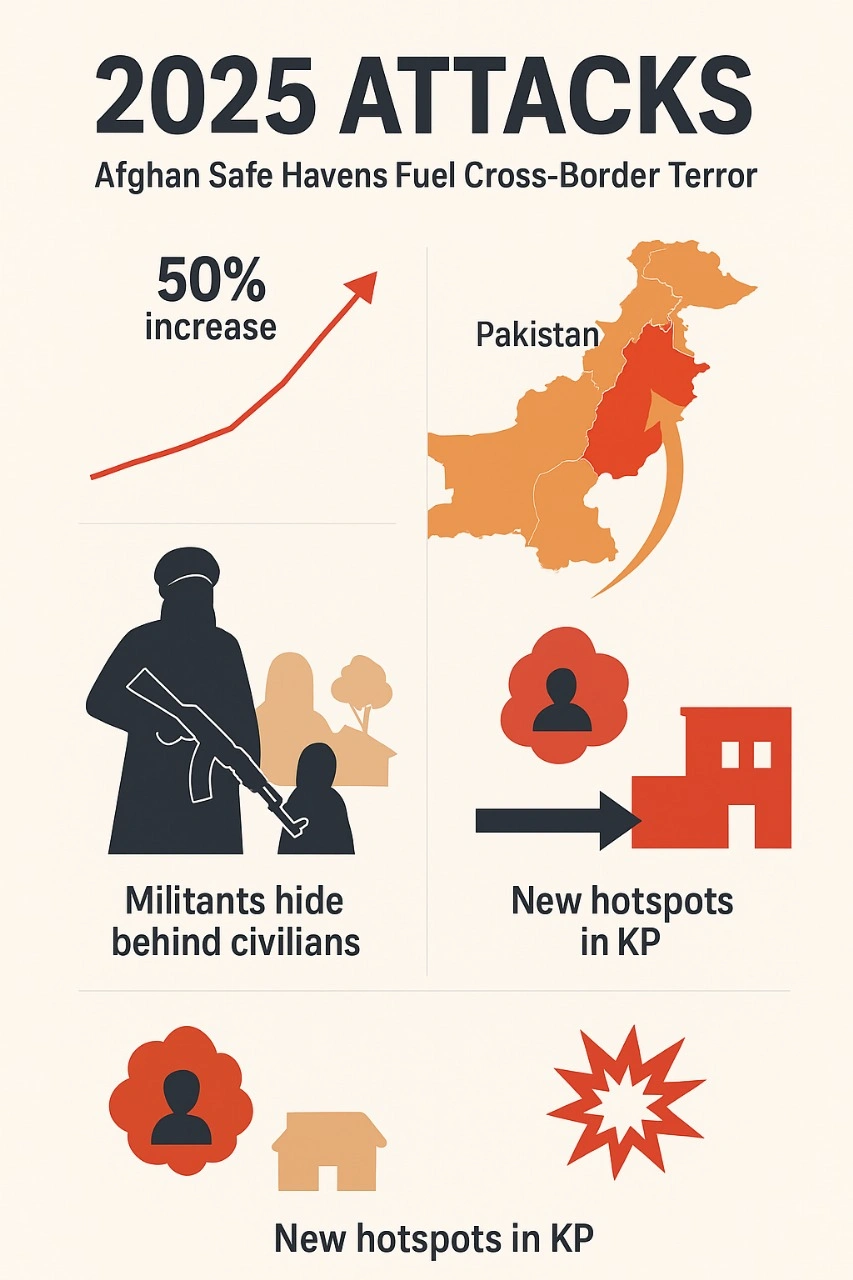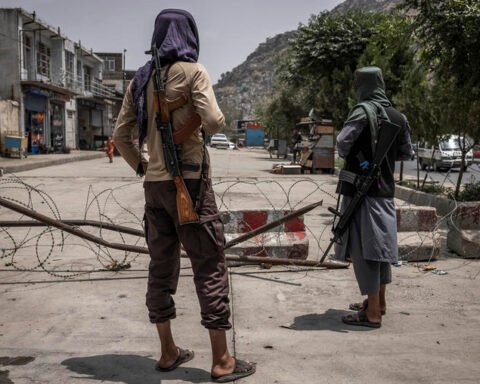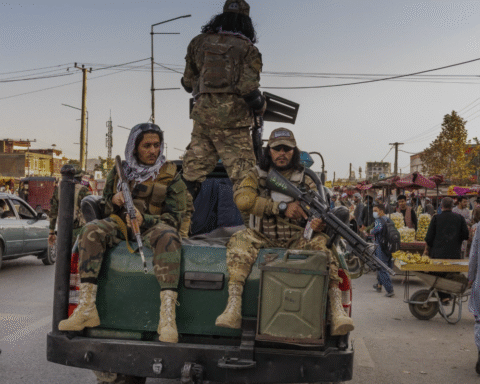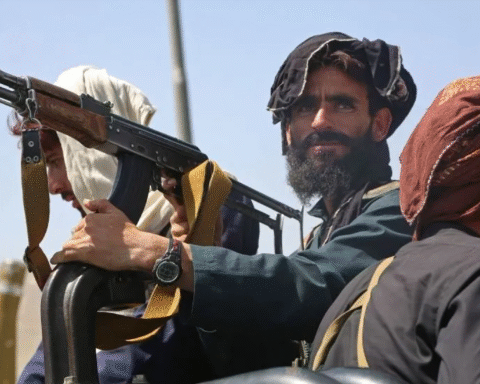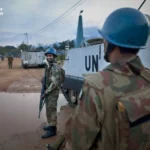Afghan Safe Havens Fuel Cross-Border Terror
2025 has been rough for Pakistan’s security. Specifically, attacks in KP and Balochistan are up by about half compared to last year, and much of that goes back to safe havens across the Afghan border. Moreover, groups like FAK and FAH are training openly there, crossing into Pakistan in organized groups, and once inside, they vanish into villages and towns. Consequently, security forces chasing them end up facing militants who shamelessly hide behind women and children.
Afghan Safe Havens Expanding
Notably, Afghanistan’s eastern provinces Nuristan, Kunar, Nangarhar, and Paktika have become hubs for this. Camps there handle training, weapons, and infiltration routes. From those bases, fighters spread into KP and Balochistan. The violence is not staying in the old hotspots either. Bajaur, Orakzai, and Mohmand are still active, but now there are incidents in Dir, Chitral, and Swat. July alone saw 50 incidents in KP, which is a lot for a single month.
Emergence of New Hotspots in KP
Strikingly, the scale of infiltration is hard to ignore. In just two months, intelligence tracked more than 20 dozen militant formations crossing into KP and nearly 7 dozen into Balochistan. That adds up to over a thousand fighters, many routed through Namruz. These are not just scattered gunmen; they are trained, organized units. However, compared to 2024, the escalation is obvious.
A UN report even mentioned payments flowing from the Afghan Taliban to militant leaders hiding underground, which shows how safe they still feel across the border.
Balochistan’s Angle
Balochistan has its own angle. Militants there are targeting civilians along ethnic lines, trying to stir up divisions and resentment. They are also hitting projects and infrastructure to drive away investors. The idea is to keep the province underdeveloped so slogans about deprivation stay alive. Security forces have made some headway, dismantling networks and arresting people like Prof. Dr. Usman, but the problem keeps shifting.
Proxy Side of the Conflict
Then there is the proxy side of it. Groups like the Baloch Youth Council pop up after attacks, staging protests under the banner of “missing persons.” It sounds like activism but often doubles as cover for militants. There have been cases where supposed missing persons later showed up as suicide bombers like Liaqat in Landi Kotal or Wadood Satakzai in Mach.
Meanwhile, foreign-based figures like Hyrbyair Marri and Dr. Naseem of BNIM keep amplifying anti-Pakistan narratives, feeding into the propaganda.
Funding Networks
Funding is another layer. Militancy in Balochistan does not sustain itself without outside money. Gulf-based channels play a big role, with people like Dr. Alla Nazar moving funds that eventually become weapons. That steady cash flow is what lets groups keep operating even after setbacks.
Recruitment Dynamics
Recruitment is just as critical. Militants tap into local grievances, tribal disputes, and poverty to keep their ranks filled. Since mid-2025, this has allowed them to maintain momentum with tactical strikes and security incidents, instead of fading out after losses.
The Bigger Picture
When you put it all together, the picture is troubling. Afghan safe havens give militants space to regroup. Cross-border infiltration is steady. Proxy groups and foreign voices cloud the picture at home. And external money ensures the machine keeps running.
KP is dealing with infiltration-driven attacks, Balochistan with ethnic targeting and sabotage.
The fix will not come from military operations alone. Pakistan needs tighter borders, stronger work to shut down funding channels, and a serious effort to push back on propaganda.
And it is hard to see things improving without Afghanistan being pressured to dismantle the sanctuaries. Otherwise, the cycle we are seeing in 2025 could stretch on.
Disclaimer: The views and opinions expressed in this article are exclusively those of the author and do not reflect the official stance, policies, or perspectives of the Platform

